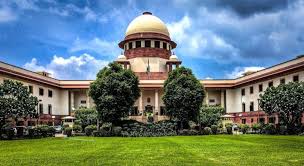In a landmark decision, the Supreme Court of India has set aside a controversial order from the Madras High Court that asserted that merely watching child pornography is not an offense under the Protection of Children from Sexual Offences (POCSO) Act or the Information Technology (IT) Act. This ruling, delivered on Monday, emphasizes that not only the act of distribution but also the mere possession and viewing of child sexual exploitative material is a punishable offense.
The case originated when a 28-year-old man was charged for downloading and viewing pornographic content involving children on his mobile phone. The Madras High Court quashed the criminal case, suggesting that without transmission or dissemination of the material, mere possession did not constitute an offense. This interpretation raised significant concerns about the legal framework surrounding child exploitation and prompted the Supreme Court’s review.
The Supreme Court, in its judgment, emphasized that the viewing and storage of child pornographic material must be treated as a serious crime. By restoring the criminal proceedings against the accused, the Court reaffirmed its commitment to safeguarding children from sexual exploitation. Justice JB Pardiwallah, who pronounced the verdict, stated, “The Madras High Court committed an egregious error in passing its judgment.”
Additionally, the Court made a critical suggestion regarding the terminology used in legal contexts. It proposed that the term “child pornography” be replaced with “child sexual exploitative and abuse material” (CSEAM) to more accurately reflect the nature of these heinous acts. Chief Justice DY Chandrachud, also part of the bench, noted that this judgment marks a significant advancement in how the judiciary addresses issues of child sexual exploitation.
The Supreme Court’s recommendation to amend the POCSO Act to adopt the term CSEAM is more than a semantic change; it reflects a deeper understanding of the implications of child exploitation. The term “child pornography” can unintentionally trivialize the gravity of the offense, suggesting a form of legitimacy to what is, in fact, a severe violation of a child’s rights and dignity. By advocating for precise language, the Court aims to foster a legal environment that underscores the seriousness of such crimes.
The Supreme Court did not stop at judicial interpretation; it also called upon Parliament to consider legislative amendments. The recommendation for an ordinance emphasizes the need for an urgent and comprehensive approach to combat child sexual exploitation. By substituting the term “child pornography” with CSEAM, the law would more effectively convey the severe nature of these offenses and enhance public awareness.
Furthermore, the Court indicated that all courts should refrain from using the term “child pornography” in any orders or judgments, thereby ensuring consistency in the legal language associated with these cases.
This ruling has far-reaching implications for the judicial treatment of child sexual exploitation cases in India. It establishes a precedent that prioritizes the protection of children and mandates a more rigorous legal framework to address offenses involving child sexual abuse and exploitation. By clarifying that mere possession or viewing of exploitative material is sufficient grounds for prosecution, the Supreme Court aims to deter potential offenders and encourage the reporting of such crimes.
The decision is expected to enhance collaboration among law enforcement agencies, child protection organizations, and the judiciary in tackling the multifaceted issues surrounding child exploitation. The Court’s insistence on a clear legal definition will aid in the consistent application of justice and may lead to increased accountability for offenders.
The Supreme Court’s recent ruling marks a pivotal moment in India’s legal landscape concerning child sexual exploitation. By overturning the Madras High Court’s lenient interpretation and advocating for legislative reforms, the Court has taken a decisive step toward reinforcing the protections available to children. This landmark verdict not only clarifies the legal stance on child sexual exploitative material but also sends a strong message that society will not tolerate any form of child abuse, including the passive acts of viewing or possessing such material. As the nation grapples with the complex issues surrounding child protection, this judgment lays the groundwork for a more robust legal framework that prioritizes the safety and rights of children above all else.

